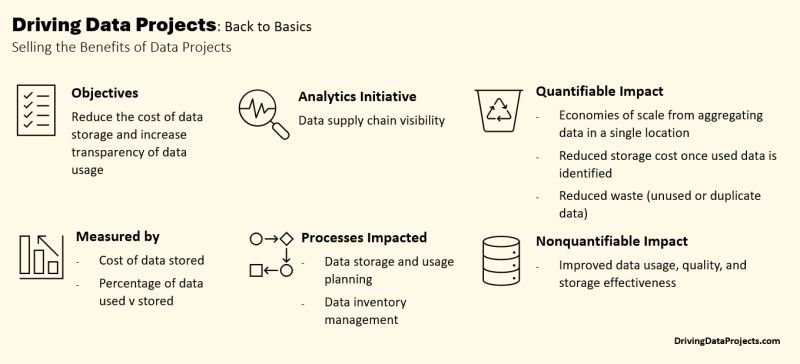Back to Basics: Selling the Benefits of Data Projects
Teaching graduate courses in informatics is a constant reminder that IT teams and data teams are still relatively invisible to the rest of the business. This should be a wake-up call to CHROs and CDOs that basic, annual compliance training is not enough to raise awareness of basic data literacy across the employee population. Everyone knows that data safety and trust are critical to organization (and national) security—but most employees don’t know much beyond that. Most data teams are invisible to the organization and treated like utilities. They are only noticed when something breaks.
Data teams should be regarded as intentional business partners because they provide the underlying technology that enables business strategy and maintains data as a corporate asset. They can help educate business partners on the upstream and downstream impacts of poor data quality, and they can help cultivate more effective ambassadors for data governance across the organization.
Whether they are new to IT or have been in it their whole careers, each student leaves with a broader perspective on the value of IT frameworks, platform spending, and IT governance's role in organizations. The crisis simulations and the cumulative assignments we engage in mimic on-the-job learning without the politics or threat of being fired. A safe learning environment where constructive feedback from faculty and peer insights can help progress thinking is invaluable to adult learning and very rewarding to witness.
BACK TO BASICS
Being an exceptional student or employee comes down to flawless fundamentals.
1️⃣ Identify clear objectives and success measures.
2️⃣ Map data and analytics initiatives to objectives and identify processes, activities, and decisions impacted.
3️⃣ Identify financial and nonfinancial benefits and measures for success.
This, we all say, is common sense. Yet, so many of us fail to do it.
COMMON MISTAKES
Once measures, processes, and benefits have been identified (like in the image below), data teams fall prey to two common mistakes:
👉 overdependence on progress metrics instead of business impact
👉 overreliance on return-on-investment (ROI) exercise to fund projects
INSTEAD, FOCUS ON
Balance progress measures by translating clearly defined success metrics into impact metrics:
🎯Faster Time to Insight leads to more Revenue
🎯Increased Data Quality leads to decreased Cost
🎯Reduced Model Development Time leads to decreased Risk
Net present value or return on investment exercise get projects funded, and those numbers are important, but instead of over-focusing on ROI, dedicate more time to creating and telling a /holistic/ value story rather than spiraling on the numbers. Data projects are more than cost-reduction strategies.
How do you sell the value of your data projects effectively? How do you tell the WHOLE story?
